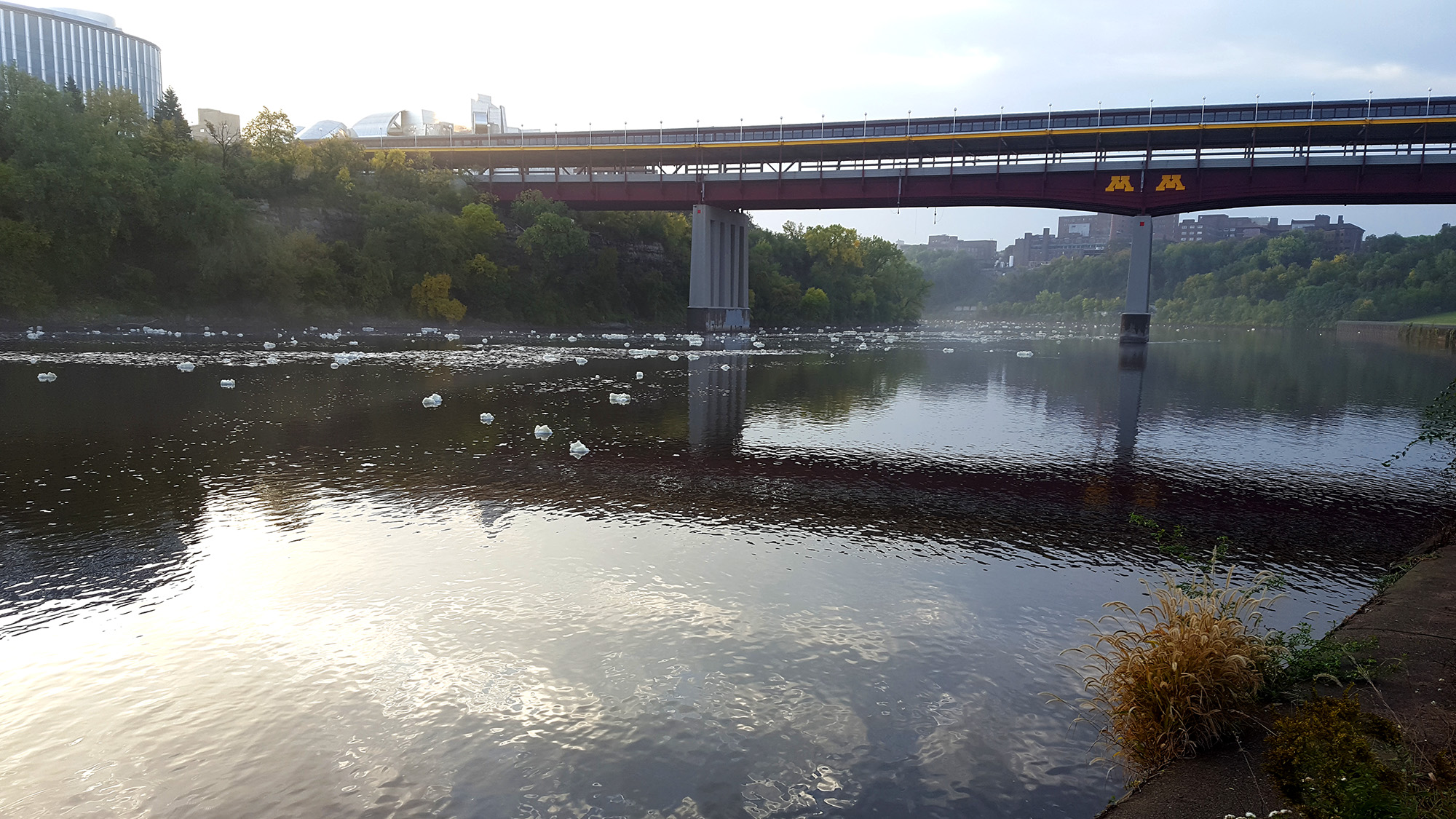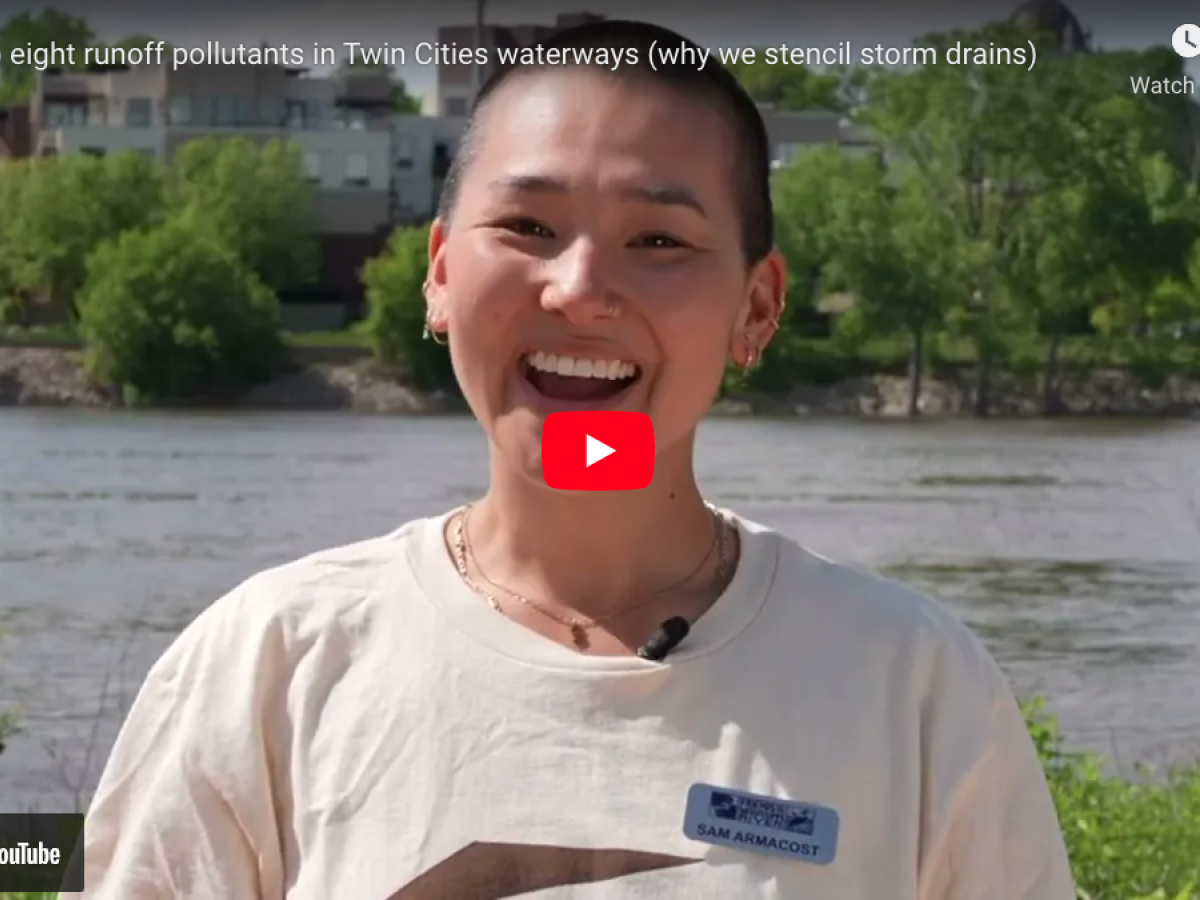What's that foam on the Mississippi River?

Puffs of white foam dot the water's surface like scattered dollops of meringue piped onto a baking sheet. Bubbly masses gather and build up in areas where the flow or something else agitates the river.
There's something jarring about the sight of this foam in the Mississippi River. It can look like someone dumped soap in the water, or like there's a questionable chemical reaction happening.
It can look like there's something really wrong.
What's actually going on?
The primary cause of river foam: Decomposition
Spates of river foam are almost always caused by organic matter breaking down in the water — like aquatic plants, fallen leaves or animal waste.
As these things decompose they release oils, which then float to the top, break the surface of the water and allow air to mix in. This mixing leads to bubbles and foam. (The Army Corps explains the surface tension science at work.)
This decomposition and mixing process is normal and can happen in all waters. Watch this KARE 11 "Verify" story for more good info.
River foam can be more common in spring and fall (when buds and leaf litter are more likely to end up in the water), and can be ginned up by turbulent waters (like downstream of a dam or dredging site). It generally breaks apart on its own and disappears over time.
This natural foam is usually an off-white or tan color, the Minnesota Pollution Control Agency explains, and has a fishy odor. The State of Michigan describes its texture as "persistent, light, not slimy to the touch." It can be more common when the water is agitated.
Two important things to note
Even though organic material is a natural occurrence, too much of it (whether it results in foam or not) can be bad for water quality. It can produce excess nutrients that feed oxygen-hungry algae blooms, for example, or muddy the clarity of the water and increase its temperature.
Also, just like unfiltered river water, the foam can contain stuff you don't want to mess with, such as bacteria or viruses. To be safe, don't play with it, don't ingest it and make sure pets don't get to it either.
But for the most part, river foam isn't a sign there is something bigger going on.
When river foam might be a problem
It's not common, but sometimes something human-made rather than natural causes foaming. Foam made from inorganic material (such as soap or industrial waste) usually has a different color and texture than naturally occurring foam — good clues to differentiate the source.
Unless a nearby discharge is reported, figuring out the exact chemical or substance causing the foam to appear requires additional testing and information.
One high-profile example: in 2019 and early 2020, officials found high levels of PFAS in otherwise naturally occurring foam in both Battle and Raleigh creeks — the former of which drains into the Mississippi River.
The Raleigh Creek discovery was likely tied to a nearby site where 3M used to dispose of waste containing PFAS, MPR News reported at the time. The source of the PFAS in the Battle Creek foam was a mystery.
But far more often than not, foam on the river is nothing more than a recurring natural oddity.
Become a River Guardian
Sign up and we'll email you when important river issues arise. We make it quick and easy to contact decision-makers. River Guardians are also invited to special social hours and other events about legislative and metro river corridor issues.
